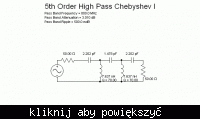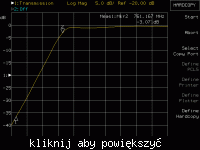abbey
Junior Member level 1
active high-pass filter
I was given a task of designing an active high-pass Chebyshev 7th order filter.I can choose any frequency etc.Can anybody help me or is there any link so I could find the transfer function and the parameters of the circuit?
I was given a task of designing an active high-pass Chebyshev 7th order filter.I can choose any frequency etc.Can anybody help me or is there any link so I could find the transfer function and the parameters of the circuit?

